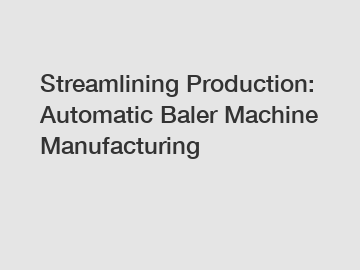Mastering Safety: Top Tips for Using a 44m Aerial Lift
# **Mastering Safety: Top Tips for Using a 44m Aerial Lift**.
Aerial lifts, particularly those that reach heights of 44 meters, are vital tools in various construction and maintenance tasks. However, their use comes with inherent risks. Mastering safety while operating these machines is paramount to ensure not only the operator's safety but also the safety of others around. Here are some top tips to help you use a 44m aerial lift safely.
## **1. Pre-Operation Inspection**.
Before taking your aerial lift into action, conduct a thorough pre-operation inspection. This ensures that the machine is in excellent working condition and that safety features are functional. Key checks include:
- **Hydraulic Systems**: Inspect hoses and connections for leaks.
- **Safety Devices**: Ensure all emergency controls are working properly.
- **Tires and Brakes**: Look for wear and check that brakes respond effectively.
- **Platform**: Check for any damage and make sure guardrails are intact.
## **2. Proper Training and Certification**.
Ensure that all operators have undergone appropriate training and are certified to operate a 44m aerial lift. The training should cover:
- **Machine Operation**: Familiarize operators with controls and safety features.
- **Emergency Procedures**: Training on how to respond in case of an emergency or equipment failure.
- **Safety Regulations**: Understanding of local, state, and federal safety regulations related to aerial lift operations.
## **3. Site Assessment**.
Before moving the lift into position, conduct a thorough site assessment. This should include:
- **Ground Stability**: Ensure the ground can support the lift's weight without risk of sinking or tipping.
- **Overhead Hazards**: Check for overhead wires, protruding structures, or other potential hazards that may pose a risk.
- **Wind Conditions**: Be aware of weather conditions; avoid using the lift in high winds or storms.
## **4. Proper Use of Personal Protective Equipment (PPE)**.
Using suitable PPE can greatly enhance safety when using an aerial lift. Recommended PPE includes:
Recommended article:Unlocking the Power of Automotive Parts Industrial Shredders: A Comprehensive Guide
How to Revolutionize Waste Management with Paper Briquette Machine?
The Ultimate Guide to Wheat Straw Briquetting
Which Universal Waste Shredding Machine Is Worth Investing In?
Key Questions to Ask When Ordering Automotive Parts Industrial Shredders: A Comprehensive Guide
How Does Wood Chip Briquette Machine Work?
Dry Oil-Free Air Compressors vs. Traditional Compressors: What's Best?
- **Hard Hat**: Protects against falling objects.
- **Safety Harness**: Always wear a safety harness when operating from an aerial lift platform.
- **Non-Slip Footwear**: Ensure good footing while entering and exiting the lift.
## **5. Communication**.
Effective communication is critical when operating a 44m aerial lift. Use the following methods:
- **Hand Signals**: Establish clear hand signals for ground personnel and the operator.
- **Two-way Radios**: Equip your team with radios to maintain constant communication.
- **Team Meetings**: Conduct pre-operation meetings to discuss tasks, potential hazards, and safety measures.
## **6. Operating Safely**.
When operating the aerial lift, adhere to these safety guidelines:
- **Stay Within Weight Limits**: Ensure that the combined weight of the operator, tools, and materials does not exceed the lift’s rated capacity.
- **Ground Condition Awareness**: Maintain awareness of the lift's base and adjust placement if necessary during operation.
- **Limit Movement**: Avoid sudden or jerky movements. Always move the lift smoothly and cautiously.
## **7. Emergency Preparedness**.
Be prepared for emergencies by:
- **Creating an Emergency Plan**: Outline procedures for emergencies, including how to rescue an incapacitated operator.
- **Having Rescue Equipment**: Ensure that rescue equipment is readily available and accessible.
- **Conducting Emergency Drills**: Regularly practice emergency scenarios with the team.
In conclusion, operating a 44m aerial lift has its challenges, but with diligent adherence to safety practices, risks can be minimized. By following the above tips, operators can ensure not only their own safety but also the safety of everyone involved in the project. Remember, safety is not a one-time action but an ongoing commitment.
Are you interested in learning more about 44m Self Propelled Aerial Lift, Self Propelled Aerial Lift, 340kg straight boom lift? Contact us today to secure an expert consultation!
Recommended article:Custom Dry Oil Free Air Compressors: Ultimate Guide
How Does Electric Bike Technology Evolve?
How to Choose the Right Power Wheel Excavator?
Creative Ways to Repurpose Household Waste: Paper Briquette Press - A sustainable solution for waste reduction?
The Ultimate Guide to Dual Shaft Shredders
Revolutionary Household Garbage Briquette Machine: The Future of Waste Management?
Which Rice Husk Pressing Machine is Best?
- Previous: 4 Tips for Selecting a Reliable 150kg Self Propelled Aerial Lift
- Next: None









